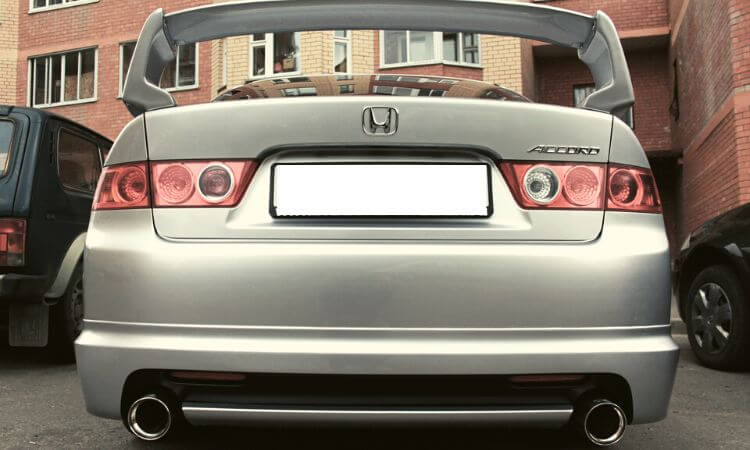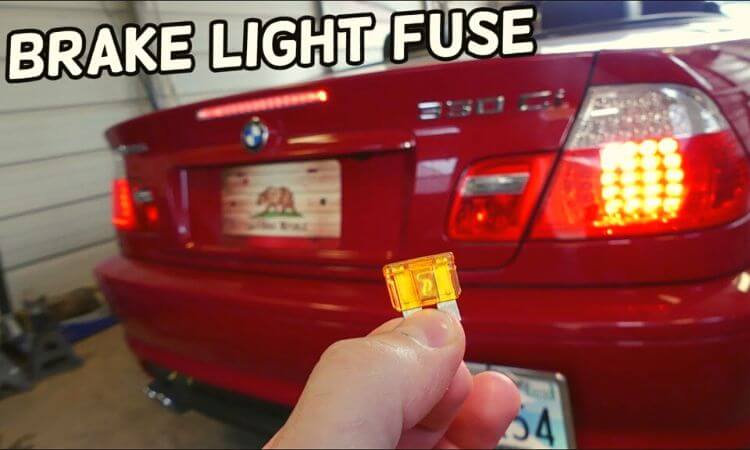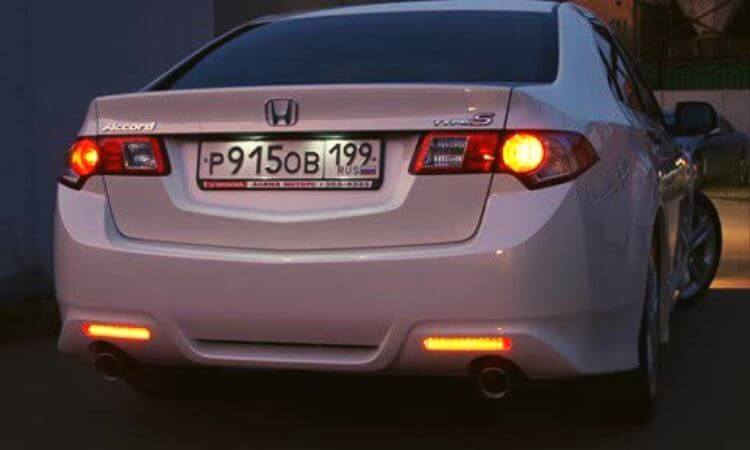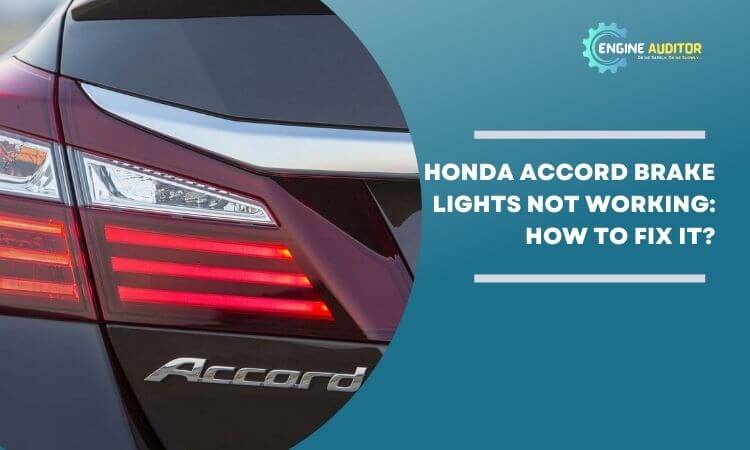Hey there! This post contains affiliate links to products. We may receive a commission for purchases made through these links. But it never influences our product selection process.
Brake lights on Honda Accord guarantee your safety. But brake lights may not work when you need to drive. It can be hazardous, especially during night drives. Yes, immediately fixing is the right solution, but do you have any practice in fixing Honda accord brake lights not working?
Quick Answer
Here is a list of the most common causes of a Honda Accord’s brake lights not working. You must check for that if you face the problem.
- Faulty Brake Light Switch
- Failed Brake Light Relay
- Bad Brake Light Fuse
- Malfunctioning Turn Signal Switch
- Worn Brake Pads
However, for a quick solution, read the below content. You will get everything to fix Honda accord brake lights issues quickly and perfectly. Let’s get started.
How to Fix Honda Accord Brake Lights Not Working: [Problems & Solutions]

Problem 1: Faulty Brake Light Switch
A faulty brake light switch can cause the fused honda accord brake lights. It is responsible for providing power to the brake lights. It needs immediate fixation to illuminate the brake lights if it is faulty.
Indeed a faulty switch is common to all car models’ brake light issues. This is the same reason for the following car models’ faulty brake lights, including Ford ranger brake lights, chevy truck brake lights, and even GMC Sierra Brake lights.
Solution 1:
- First, locate the brake light switch. The brake light switch is mounted under the brake pedal in the Honda Accord. You may need to remove the panel underneath the dash to access it.
- Then disconnect the wiring harness from the switch.
- Check for the switch if it is broken or damaged.
- Remove it if it is faulty by unscrewing it from the brake pedal.
- Install the new brake light switch and screw it in place.
- Then reconnect the wiring harness to the new switch.
- Test the brake lights to ensure they are working properly.
Problem 2: Failed Brake Light Relay
A brake light relay is also essential for properly supplying power to the brake lights. You may also experience honda accord brake lights not working due to a failed brake light relay. You must check for a brake light relay to fix the problem quickly.
Solution 2:
- Locate the brake light relay. In the Honda Accord brake light’s relay is usually located in the fuse box under the dashboard on the driver’s side.
- Once locate the relay check it for damage. If it is damaged, remove it. You will need a pair of pliers to remove the old relay.
- Once removed, install the new relay. Insert the new relay into the same slot where the old one was. Make sure it is inserted properly.
- Now Test the brake lights by pressing the brake pads.
Problem 3: Bad Brake Light Fuse

The brake light fuse is tiny but essential for properly functioning brake lights. It is good to check for the brake light fuse if you face an issue with brake lights.
Solution 3:
- Locate the brake light fuse box. In the Honda Accord, it is under the hood of your vehicle.
- Check the fuse diagram on the box cover to identify the brake light fuse.
- Use a fuse puller or pliers to remove the brake light fuse.
- Inspect the fuse for any signs of damage, such as a broken filament or a discolored appearance.
- If the fuse is faulty, replace it with a new brake lights fuse.
- Install the new fuse in the box and test the brake lights to see if they are working properly.
Problem 4: Malfunctioning Turn Signal Switch
The turn signal switch sends signals to the brake lights to turn on. If it has malfunctioned, you will experience faulty honda accord ex-brake lights. You should check for the turn signal switch to remove the brake lights problem.
Solution 4:
- Locate the turn signal switch on your Honda Accord. This is usually located on the steering column, near the steering wheel.
- Then disconnect the battery to protect it from any electrical shock or damage.
- Remove the plastic covers surrounding the steering column to gain access to the turn signal switch.
- Remove the faulty turn signal switch and replace it with a new one. Make sure to choose a compatible turn signal switch for your Honda Accord.
- Install the new turn signal switch, return the plastic covers, and reconnect the battery.
- Test your brake lights to ensure they are working properly.
Problem 5: Worn Brake Pads
It is essential to properly press the brake pads to send signals to the brake lights to illuminate when needed. If brake pads are worn, you may experience brake lights issues. Check for the brake pads and fix them immediately to illuminate the brake lights on the Honda accord properly.
Solution 5:
- Park your Honda accord on a level surface and set the parking brake.
- Open the hood and locate the brake fluid reservoir on the driver’s side of the engine compartment.
- First, remove the brake fluid reservoir cap. Then take a syringe and remove some brake fluid to avoid overfilling.
- Then remove the wheel that needs brake pad replacement.
- Remove the caliper bolts using a socket wrench, then gently pry the caliper away from the rotor.
- Remove the worn brake pads and replace them with new ones, ensuring they fit correctly into the caliper bracket.
- Slide the caliper back into place and tighten the bolts.
- Put back the fluid reservoir cap.
- Test the brake lights to ensure they work properly on your Honda Accord.
How To Replace 2008 Honda Accord Brake Light?
Follow the steps below for honda accord brake light replacement.
- Open the trunk and locate the brake light housing.
- Turn the socket counterclockwise to release it from the housing.
- Remove the old bulb and replace it with a new one.
- Test the new bulb by pressing the brake pedal and ensuring it illuminates.
- Place the socket back into the housing and turn it clockwise to secure it.
- Close the trunk and test the brake lights again to ensure they work properly.
Why Does The Honda Accord Brake Light Stay On?

The brake light on a Honda Accord may stay on for various reasons, such as a faulty brake light switch, low brake fluid level, or a problem with the brake system. Acquiring mechanical knowledge helps you to troubleshoot such problems, including tail and dash light defects.
How Do You Fix It?
- Check the brake fluid level- Make sure the brake fluid level is at the appropriate level. If it is low, fill it up to the required level.
- Inspect the brake pedal– Look under the brake pedal for a small switch that activates the brake lights when the pedal is pressed. Ensure the switch functions properly and the brake pedal returns to its normal position.
- Check the brake light switch– If the switch is not functioning correctly, replace it. You can find a replacement at a local auto parts store or online stores such as amazon or eBay etc.
- Inspect the wiring– Check the wiring for any breaks or shorts. Replace any damaged wiring.
- Test the brake lights– Finally, test the brake lights to ensure they are working correctly.
Frequently Asked Questions (FAQs):
What is the Honda Accord Brake Light Fuse Location?
Where is The 2000 Honda Accord Brake Light Fuse Location?
How to Replace Brake Light Switch on 2000 Honda Accord?
02. Unplug the electrical connector and remove the switch from its mount.
03. Install the new switch, ensuring proper alignment and connection.
04. Test the brake lights to confirm proper functioning.
Conclusion
We already know Honda Accord brake lights may not work for several causes. You must check for all possible causes and fix them accordingly. You can save time and money by fixing the Honda Accord brake lights yourself. But try it only if you are confident in your skills; otherwise, seek professional assistance.

